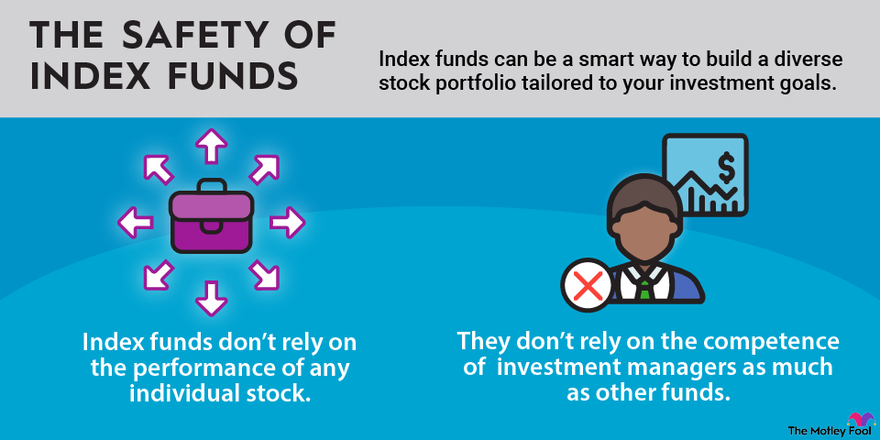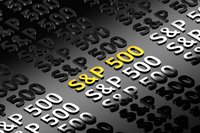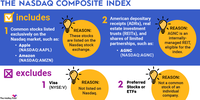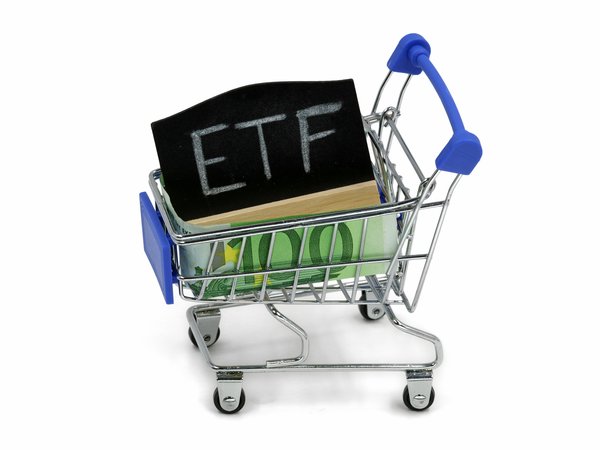While the Dow Jones Industrial Average and the S&P 500 get most of the headline attention, it's important for investors to understand that there are many different stock indexes. One of the most popular stock indexes that doesn't track large companies is the Russell 2000, widely considered the benchmark for smaller U.S. stocks.
With that in mind, here's a rundown of what investors should know about the Russell 2000 Index, how it works, and whether it could be a smart investment choice.

What is it?
What is the Russell 2000 Index?
The Russell 2000 Index, sometimes abbreviated Russell 2K, is the most widely used index of small-cap stocks -- stocks with a relatively small market capitalization. The index is listed under the ticker INDEXRUSSELL: RUT.
There are no hard-and-fast rules for when a stock is a small cap. The key point here is that there's a broad market index known as the Russell 3000 Index. It is divided into two smaller ones: the Russell 1000, which accounts for the 1,000 largest companies, and the Russell 2000, which accounts for the remaining two-thirds.
The largest company in the Russell 2000 index has a market cap of roughly $10 billion. The smaller ones have market caps in the $200 million range.
The Russell 2000 is a market capitalization-weighted index, as are the majority of popular stock indexes -- the Dow Jones Industrial Average (DJINDICES:^DJI) being the main exception. This means that the 2,000 companies that comprise the index don't contribute equally to its performance. Larger companies have a proportionally greater impact than smaller ones.
How does it work?
How does the Russell 2000 Index work?
The Russell 2000 is designed to provide the best indicator of how small-cap U.S. stocks are doing.
To keep up to date on small-cap stocks, the Russell 2000 index is reconstituted annually to ensure that the companies in it are representative of the small-cap universe of stocks. In simple terms, if a company gets too large, it will be removed from the Russell 2000 index. In turn, it will likely be placed in the Russell 1000 index, which is designed to be a barometer of how large-cap stocks are doing.
As a real-world example, in the 2021 reconstitution, GameStop (GME 3.08%) was added to the Russell 1000 and removed from the Russell 2000 after its price soared in the meme stock craze. In all, 56 companies were added to the Russell 1000 in 2021, with 30 of them moving up from the Russell 2000.
How is it different?
How is the Russell 2000 different from other major stock indexes?
There are many important stock indexes, and all focus on a different basket of stocks. Following are some of the most common:
- Dow Jones Industrial Average: The best-known stock index in the U.S., the Dow includes 30 of the largest publicly traded companies. Unlike most other indexes, the Dow is price-weighted, meaning stocks with higher share prices contribute more to the index's performance.
- S&P 500: This one includes 500 large public U.S. companies. Note that they aren't necessarily the largest 500.
- S&P MidCap 400: This comprises 400 public U.S. companies with market capitalizations between $1.6 billion and $18.6 billion.
- S&P SmallCap 600: This index includes 600 public U.S. companies with market capitalizations between $208 million and $7.9 billion. The S&P 500, S&P MidCap 400, and S&P SmallCap 600 are collectively known as the S&P Composite 1500 Index.
- Nasdaq Composite: An index of all the companies traded on the Nasdaq exchange.
- Nasdaq 100: An index of 100 of the largest Nasdaq-listed companies, widely considered a barometer for how tech stocks are performing.
- Russell 1000: The 1,000 largest public U.S. companies. The Russell 1000 and Russell 2000 are collectively known as the Russell 3000, regarded as one of the best barometers for the overall U.S. stock market's performance.
So what makes the Russell 2000 different from the rest?
- Smaller and more volatile companies: The stocks in the Russell 2000 are smaller than those in "headline" indexes such as the S&P 500. Many are newer growth companies that tend to be more volatile than their larger counterparts. In other words, don't be surprised if the Russell 2000 experiences more dramatic swings than large-cap indexes.
- Higher growth potential: While they tend to be more volatile, smaller-cap stocks typically have much more growth potential than larger companies. Think of it this way: It would be far more difficult for Apple (AAPL -1.92%) to double in size than it would be for a newer tech company with a $1 billion market cap. So while their price swings tend to be more dramatic, small-cap stocks tend to outperform large caps over long periods.
- More diversified: Because it focuses on smaller companies and contains 2,000 of them, the Russell 2000 is more diversified than other popular indexes such as the S&P 500. For one thing, it is less top-heavy and doesn't depend as much on the performance of just a few large companies. The median market cap of a Russell 2000 stock was $950 million as of Dec. 31, 2022.

In a nutshell, the Russell 2000 is composed of smaller and more volatile stocks than those in large-cap indexes. On the other hand, the large number of companies in the index helps to mitigate the risk since it's less reliant on any particular stock's performance.
Company list
Russell 2000 companies list
It wouldn't be practical to list all 2,000 companies here. Instead, here are 10 of the largest Russell 2000 companies, just to give you an idea of the types of companies that make up the index.
- Shockwave Medical (SWAV 0.12%)
- Emcor Group (EME -0.58%)
- Iridium Communications (IRDM 0.53%)
- Saia (SAIA -3.59%)
- Apellis Pharmaceuticals (APLS 0.62%)
- Inspire Medical Systems (INSP -0.68%)
- Crocs (CROX -2.17%)
- Texas Roadhouse (TXRH 1.41%)
- Kinsale Capital (KNSL 1.12%)
- Prometheus Biosciences (NASDAQ:RXDX)
Data source: Vanguard. Data current as of June 13, 2023.
The takeaway is that while these aren't exactly tiny enterprises, they aren't giant companies either. That's the key difference between the Russell 2000 and the "headline" indexes.
Small-cap subindexes
Small-cap subindexes in the Russell 2000
While the Russell 2000 is designed as a barometer of small-cap stocks, there are some subindexes composed of stocks in the Russell 2000.
For example, the Russell 2000 growth index is designed to gauge how small-cap growth stocks are performing. About 1,300 stocks out of the broader Russell 2000 qualify for the growth subindex, with the technology and healthcare sectors making up the largest contributions.
Conversely, the Russell 2000 value index comprises hundreds of value stocks from the index. It's also worth noting that many Russell 2000 stocks are included in both subindexes. As of April 2023, 1,363 stocks were in the Vanguard Russell 2000 Value ETF (NYSEMKT:VTWV) and 1,098 in the Vanguard Russell 2000 Growth ETF (NYSEMKT:VTWG).

How to invest
How to invest in the Russell 2000 index fund
Exchange-Traded Fund (ETF)
If you want to invest in the Russell 2000 Index, you don't need to buy all 2,000 stocks. You can invest in the index rather easily through a mutual fund or exchange-traded fund (ETF) designed to track it passively.
One good example is the Vanguard Russell 2000 ETF (VTWO -0.35%), which invests in all the stocks in the index according to their relative weights. With a small (0.10%) expense ratio, the ETF's fees are low, and its long-term performance should be virtually identical to that of the index itself.
Other Major Stock Indexes
Other Major Stock Indexes
Should I invest?
Is investing in the Russell 2000 Index right for you?
Investing in the Russell 2000 is a great way to get exposure to the exciting world of small-cap investing without relying too heavily on the performance of any single company. The vast diversification of the index should help to smooth out the volatile nature of investing in smaller stocks while maintaining the potential for market-beating performance.
Russell 2000 Index FAQs
What is the Russell 2000?
The Russell 2000 Index, sometimes abbreviated as “Russell 2K,” is the most widely used index of small-cap stocks -- stocks with a relatively small market capitalization.
What are stock market indexes?
A stock market index shows how investors feel an economy is faring. An index collects data from a variety of companies across industries. Together, that data forms a picture that helps investors compare current price levels with past prices to calculate market performance.
What is the Dow Jones?
The Dow Jones Industrial Average is a stock index that tracks 30 of the largest U.S. companies. Created in 1896, it is one of the oldest stock indexes, and its performance is widely considered a useful indicator of the health of the entire U.S. stock market.
The Dow Jones Industrial Average index is managed by S&P Dow Jones Indices, a joint venture majority-controlled by the financial information and analytics company S&P Global (NYSE: SPGI).





